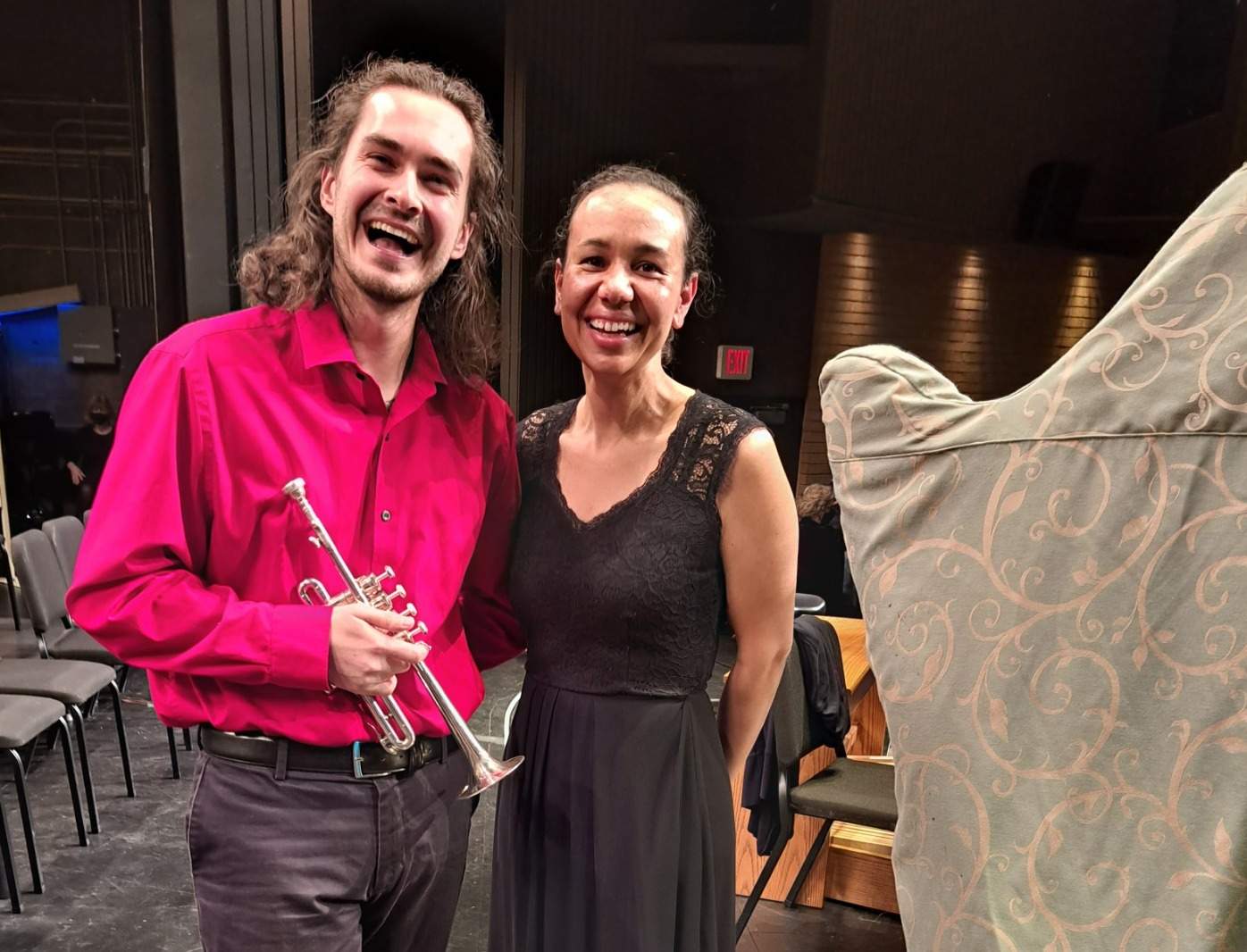The James Dunn Theatre at the College of Marin rang with Christmas spirit Dec. 17 as the Marin Oratorio, directed by Paul Smith, performed Vivaldi’s Gloria and St. Saëns’ Oratorio de Noel, Op. 12. An audience of 260 mostly masked and vaxxed attendees were also treated to an encore: the rousing Hallelujah chorus from Handel’s Messiah Oratorio.
Conducting from score, Mr. Smith, whose appreciation for his musicians and singers and infectious enthusiasm always communicate to the audience, set a moderate tempo that emphasized the thrilling musical leaps of the Vivaldi’s opening Gloria in excelsis Deo. In this most engaging of opening phrases, the octaves bounced like balls from floor to ceiling. The chorus of nearly 85 met the challenge of projecting through masks, and although muted, their sound was clear and strong, and the soloists and conductor were not constrained by masks. They were limited for space, however: sopranos Sibel Demirmen and Christa Durand, contralto Valentina Osinski, tenor Michael Orlinsky and baritone Martin T. Bell had no place to sit on the crowded stage, and their frequent entrances and exits were at first distracting.
The small orchestra consisted of four violins led by concertmaster Mark Jordon, two violas, one cello (the marvelous Carol Rice), a double bass, oboe, Cortez Montalbo’s trumpet and an organist, Cheryl Ziedrich. Harpist Aja Gianoloa-Norris joined the ensemble for the St. Saëns. The instrumentalists were downstage of the chorus and at times in the Vivaldi, when they provided a rhythmic backbone to the singers rather than a harmonic blending, their sound was too prominent.
The Theater is audience-friendly with good sight lines and minimal reverb. Mr. Orlinsky, Mr. Bell and Ms. Durand had the most sonic projection. Ms. Demirmen’s melismatic singing was especially lovely in the duet Domine Deus, Rex coelestis with the oboeist Brenda Schuman-Post. After a shaky beginning in Domine Deus, Agnus Dei, Ms. Osinski (who stepped in for an ill Karen Clark) sang with her usual confidence and clarity. Mr. Orlinsky, listed as a baritone on the program, is a genuine tenor, and his solos were very beautiful in the upper range. Ms. Durand’s ringing solos were another high point. The trumpet parts of the Gloria evoked the angels, and Mr. Montalbo’s high notes were pure, sweet, with minimal wobble, though on occasion his entries were a split-second late. Mr. Smith’s Marin Oratorio chorus sang splendidly throughout, and the culminating fugue Cum Sancto Spiritu, in which the initial octaval leaps are reprised, was a stirring culmination to the concert’s first half.
There was no intermission, and once the soloists had taken their bows, Mr. Smith addressed the audience to introduce the St. Saëns Oratorio de Noel, Op. 12, praising the many virtues of the French composer, an astounding prodigy and polymath. Mr. Smith said, “Every note St. Saëns wrote is good.” With that, he brought forth a warm and shining performance of a charming work that indeed held its own alongside the splendid Gloria.
The oratorio’s lyrics are a selection of biblical passages from the Old and New Testaments, pertaining to the coming of the Messiah. The first, Prélude (Dans le style de Séb. Bach), bridges the nearly two-century gap between Vivaldi and St. Saëns and demonstrates the Frenchman’s deep understanding of Baroque music. It is, as Mr. Smith asserted, wholly good writing: the chorus and orchestra blended as a harmonic ensemble, more so than in certain parts of the Gloria, where the orchestra takes a back seat. Ms. Durand’s solo from John 11:27 was particularly lovely, and Mr. Orlinsky’s high tenor parts carried emotional weight. Ms. Demirmen and Mr. Bell’s trio with harpist Ms. Gianoloa-Norris (playing shining arpeggios) was luminous, as was the harpist’s duet with organist Ziedrich.
Throughout the concert Mr. Smith’s cues were direct and never indistinct. It was clear that he puts his passion into rehearsal work, and the musical result always seems about the performers and the score, never about himself. After the St. Saëns came the surprise Hallelujah! Chorus, eliciting a murmur of delight in the audience, some of whom joined in the singing. It brought Marin Oratorio’s Christmas concert to a happy conclusion.
Published at classicalsonoma.org on December 25, 2022
|
